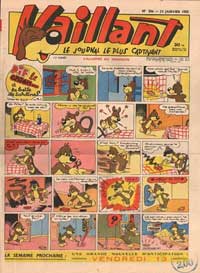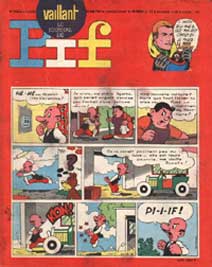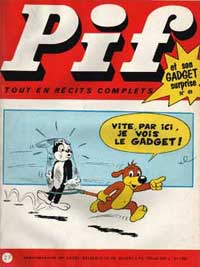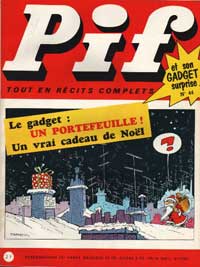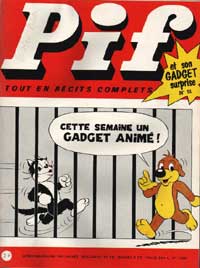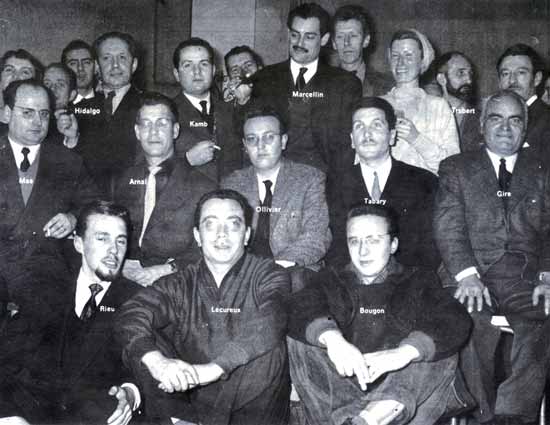Comics History
Vaillant/Pif (1945 - 1992, 2004 - 2009)
The first issue of the French comics magazine Vaillant appeared shortly after World War II, launched by the publisher of the same name. In fact, this weekly periodical was the continuation of the republican magazine, Le Jeune Patriote (the young patriot), which was published illegally during the war. At first, most of the stories that appeared in Vaillant were full of post-war anger and patriotic sentiment. These patriotic themes were, of course, to be expected, since the magazine started its publication right after the French Liberation. An example of such a comic is 'Fifi, Gars du Maquis', written by Michel Debonne and Roger Lécureux and illustrated by Auguste Liquois and Raymond Cazanave. The patriotic feelings were expressed by the sub-title that Vaillant used in the first few months: Le Jeune Patriote, derived from the magazine's war-time predecessor.
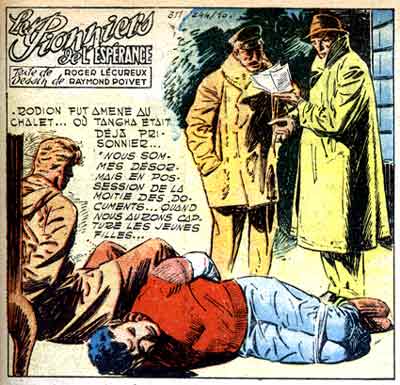
In late 1945, Raymond Poïvet joined the Vaillant team, who started his famous science-fiction series 'Les Pionniers de l'Espérance'. This space pioneers saga soon became one of the most popular series of the magazine, and ran for 30 years. Throughout the 1940s, many artists joined the ranks of Vaillant, like Rémy Bourlès ('Bob Mallard' series in 1946), René Bastard ('Nasdine Hodja' in 1946 and 'Yves le Loup' in 1947) and also Lucien Nortier ('Capitaine Cormoran' in 1947 and the 'Sam Billie Bill' series in 1948).
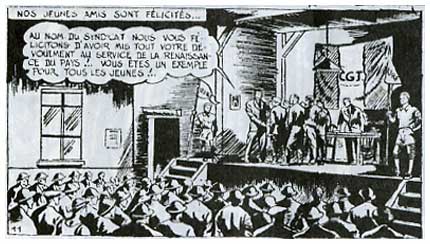
Although most comics were realistic at the time, Eugène Gire was present from the beginning with humorous series like 'R. Hudi', 'La Pension Radicelle' and 'À Babord'. Other humorous work came from artists like Claude-Henri and José Cabrero Arnal. The latter started the animal series 'Placid et Muzo' in May 1946, which was continued in the following decades by several artists.
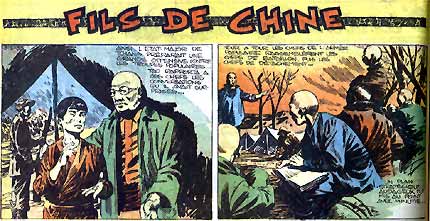
The magazine's sales went so well, it doubled its number of pages from 8 to 16 in April 1950, and was doubled again in 1956. This created space for new artists like André Joy ('P'tit Joc'), Jen Trubert ('Bobby Poirier'), Paul Gillon ('Fils de Chine'), Claude Pascal ('Louk'), Jean-Claude Forest ('Copyright') and Jean Cézard ('Arthur le Fantôme'). Jean Tabary started his famous 'Totoche' series in the late 1950s, which ran throughout the 1970s, as did its spin-off 'Corinne et Jeannot'.
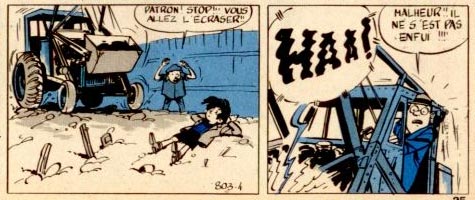
Vaillant had some financial problems in 1959 so it had to reduce the number of pages from 32 to 24. This didn't stop the publisher from adding a supplement to the magazine, Pipsi. The main comic in the Pipsi supplement was the character of the same name created by René Goscinny and Christian Godard.
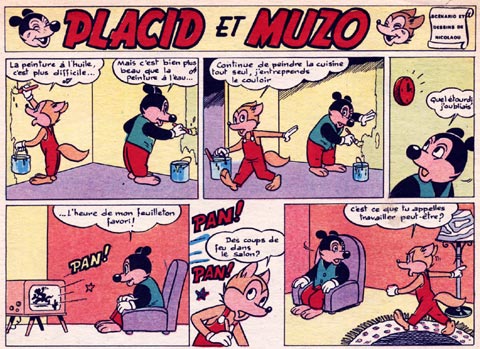
Vaillant got its 32-page format back in 1960, and throughout the sixties new artists joined the magazine, like Marcel Gotlib (signing as Marglo at the time), Fransisco Hidalgo with his 'Teddy Ted', and Michel Greg with 'Les As'.
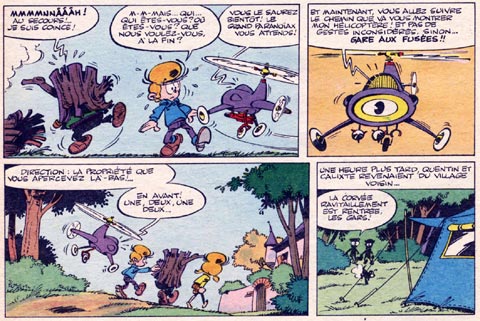
From 1952 José Cabrero Arnal had continued his 'Pif le Chien' series in Vaillant (the comic originally appeared in L'Humanité). The humorous adventures of the dog Pif had become one of the most popular series of the magazine. Several artists have succeeded Arnal on the series throughout the years, like Michel Motti, Roger Mas, François Corteggiani, Giorgio Cavazanno, Louis Cance, François Dimberton, etc.
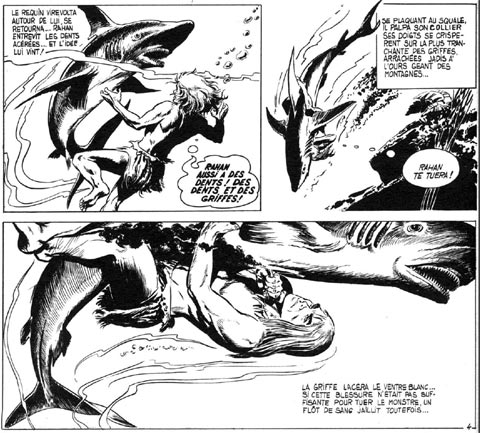
Because of the popularity of the series, Vaillant changed its name to Vaillant, Le Journal de Pif in 1965. On 24 February 1969 the name Vaillant completely disappeared, when the name was changed to Pif Gadget. Reason was the addition of a small gadget or toy that came with every new issue of the magazine.
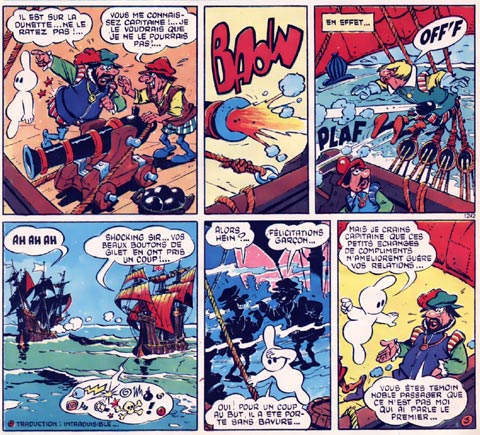
The Pif era was characterized by the disappearance of the continuing stories. The magazine now contained only short stories, introducing new series like 'Le Concombre Masqué' (by Nikita Mandryka), 'Rahan' (by André Chéret and Roger Lécureux), 'Corto Maltese' (by Hugo Pratt), 'Loup Noir' (by Kline), 'La Jungle en Folie' (by Mic Delinx and Godard) and 'Fanfan la Tulipe' (by Lucien Nortier and Christian Gaty).
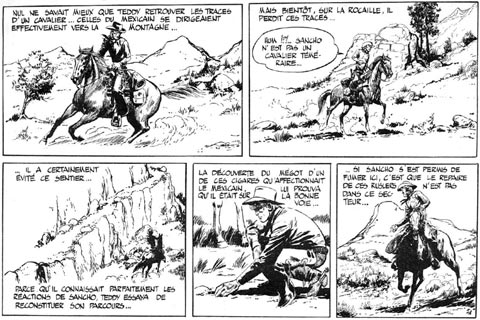
In the 1970s, the general public lost interest in Pif Gadget. The magazine had lost much of its artistic qualities, and it now contained mostly comic adaptations of television series. Still, there are some interesting series that appeared at the time, like 'Sandberg Père et Fils' by Alfonso Font, 'Capitaine Apache' by Norma, ' Cythère l'Apprentie Sorcière' by Fred, 'Marine' by Pierre Tranchand and 'Masuerouge' by Juillard and Cothias. However, most of the magic was gone.
In 1982 the magazine changed its name again, this time to 'Le Nouveau Pif' (The New Pif). This promising name sounded like it was the beginning of a new era, but it didn't do any good. Most of the comics that were published in Le Nouveau Pif were series that appeared at other publishers. Famous Dupuis series like 'Boule et Bill' (by Jean Roba) and 'Gaston Lagaffe' (by André Franquin) now found their way to Pif, as well as 'Robin Dubois' (by Turk and Bob de Groot) that appeared in Tintin.

Authors like Jean-Yves Mitton, Paul Gillon, Jean Ollivier and François Corteggiani still created comics for Pif, but this didn't prevent the magazine of completely cancelling its publication in 1992. In addition to Spirou and Tintin, Vaillant/Pif was one of the most important French comics magazines of the last half of the 20th century.
Between July 2004 and 2009, a new version of Pif Gadget was relaunched. The new edition contained new stories with 'Pif le Chien' drawn by Bernard Ciccolini and written by Richard Médioni, as well as reprints of several of the older series.
Vaillant comic artists and writers in 1957
Index of the Vaillant/Pif publications is found at the BDoubliees.com site




